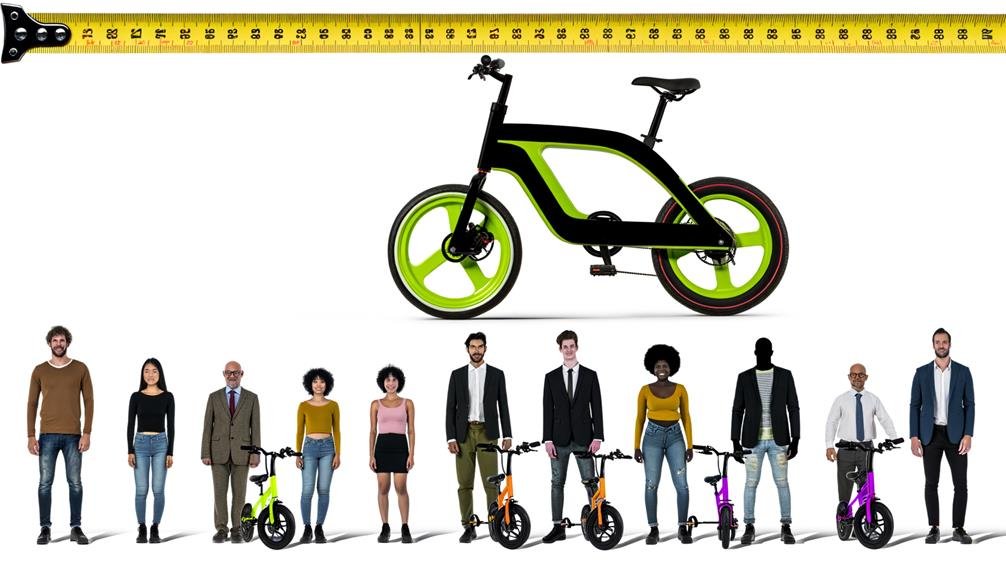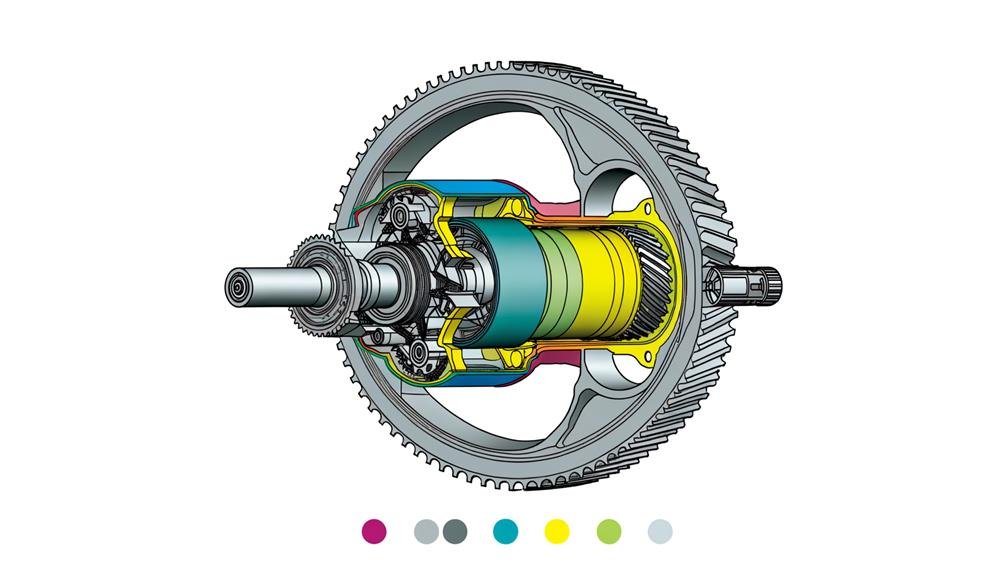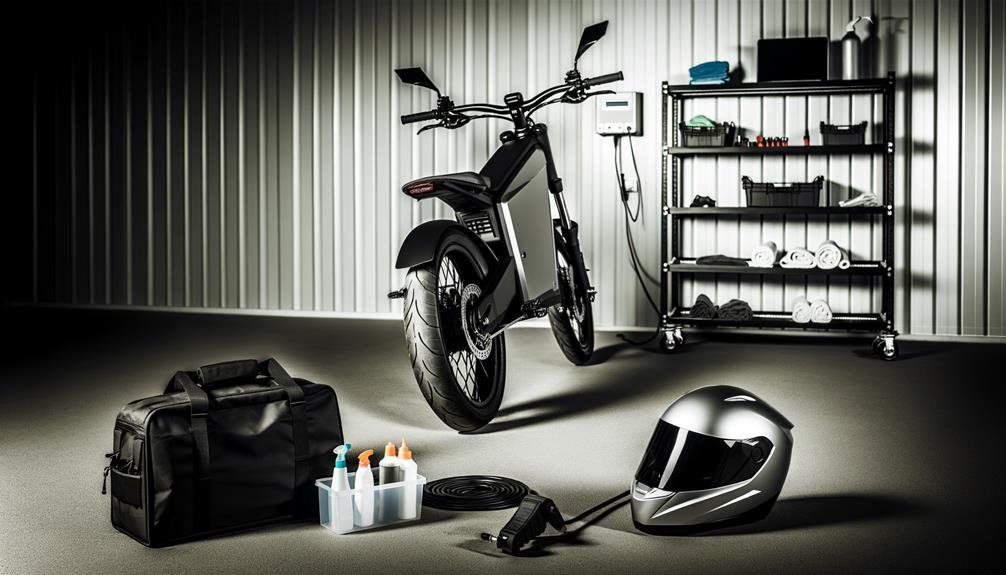Charles Miller is a veteran bike enthusiast with over 12 years of experience dealing with bikes as a mechanic. Despite immense love and expertise for...
Navigating the requirements to ride an electric bike can be like trying to find your way through a maze in the dark. We've made it our mission to bring some light to this topic.
It's not as simple as just jumping on and riding off into the sunset. There are certain restrictions and rules that vary from state to state. For example, the power of the motor, the maximum speed, and whether a license or registration is required.
And let's not forget about safety gear. But don't worry, we're here to help you understand all the ins and outs. You might be surprised at what you find out.
- Key Takeaways
- Understanding Electric Bike Laws
- Age Restrictions for E-Bikes
- Licensing and Insurance Requirements
- Motor Power and Throttle Limitations
- Necessary Safety Gear
- Electric Bike Riding Etiquette
- Road Rules for Electric Bikes
- Getting Assistance With E-Bikes
- Frequently Asked Questions
- Conclusion
Key Takeaways
- Electric bikes in Texas are categorized into three classes: Class 1, Class 2, and Class 3.
- Class 3 electric bikes are not street legal in Texas and should stick to designated paths and trails.
- Riders must be at least 16 years old to operate a Class 3 electric bike.
- Helmet usage is compulsory for riders under 18, regardless of the bike class.
Understanding Electric Bike Laws
Navigating the landscape of electric bike laws in Texas, we find that these bikes are categorized into three classes, each with its own set of speed and motor usage restrictions. Understanding these Electric Bike Laws is essential for anyone wanting to ride an electric bike in the Lone Star State.
Firstly, let's examine the class of electric bikes. Class 1 and 2 bikes have a maximum speed of 20 mph, while Class 3 can reach up to 28 mph. All classes must have a motor that provides assistance at speeds below these thresholds.
Importantly, riders must be aware of specific age restrictions to riding these bikes. For instance, riders under 15 aren't allowed to operate a Class 3 electric bike. Moreover, helmet usage is compulsory for riders under 18, regardless of the bike class.
Texas offers a welcoming environment for electric bike enthusiasts. We don't need licenses or registrations for any class of electric bike. As riders, we must follow the same rules as regular bikes, such as being allowed on roadways and biking paths, but not sidewalks.
Age Restrictions for E-Bikes
Shifting our focus from the general rules of riding electric bikes in Texas, let's now zero in on the specific age restrictions attached to the operation of these e-bikes. Age restrictions for e-bikes are essential to ensure rider safety and compliance with e-bike laws.
In many states, including Texas, the minimum age to ride an electric bike is 16 years old. However, for class 3 e-bikes, which have a higher top speed, riders must be at least 16 years old.
While these age requirements aim to protect young riders, riders aren't required to have adult supervision. This freedom allows younger cyclists to explore and enjoy the benefits of e-biking independently. However, for those under 18, wearing a helmet is compulsory, emphasizing safety over freedom.
Interestingly, there are provisions for younger riders to ride as a passenger on an electric bike. This exception applies to those under 15, who can't operate a class 3 e-bike themselves.
Licensing and Insurance Requirements

Surprisingly, in Texas, there's no need for licenses, registration, or insurance to ride an electric bike, making it simpler for enthusiasts to enjoy the ride.
However, some basic guidelines apply to riding an electric bicycle, particularly related to age and class of the bike.
While there's no specific age restriction to ride an electric bike in general, to operate a class 3 electric bike, riders must be at least 15 years old. It's a detail worth noting for those thinking of upgrading their ride. As for helmet usage, although it isn't mandated by law, we strongly recommend it for your safety.
The absence of registration requirements and not having to need a license can be a relief for many. No more worries about paperwork or legal fines. It's all about the joy of biking and the freedom that comes with it.
However, though insurance isn't formally required, it's something to consider. Accidents do happen, and having coverage could save you from potential costs.
Motor Power and Throttle Limitations
In the realm of motor power and throttle limitations, it's essential to know that electric bikes in Texas must operate with a motor of less than 750w. This power limit ensures that you can enjoy your electric assisted bicycle safely, without compromising on the thrill of the ride.
When we talk about throttle limitations, the top speed comes into play. Class 2 electric bikes, for instance, have a throttle-activated motor that cuts off at a speed of 20 mph. This means you can ride without pedaling up to this speed. However, for Class 3 e-bike riders, the scene changes. The motor provides assistance only when you're pedaling and cuts off at 28 mph.
The rules also ensure the safety of younger riders. Those under 15 years can't operate a Class 3 e-bike, except as passengers. Remember, these bikes aren't street legal in Texas, so stick to designated paths and trails.
Navigating motor power and throttle limitations may seem intricate, but it's all about ensuring you can ride electric bikes safely. Understanding these rules helps us belong to a responsible and aware community of e-bike enthusiasts.
Necessary Safety Gear

Now, let's move on to discussing necessary safety gear.
It's important to note that regardless of the type of electric bike you ride, wearing appropriate protective equipment, including a helmet and visibility gear, isn't just a smart choice but also a legal requirement in many places.
We'll look at these crucial aspects and understand why they're so essential to your riding experience.
Essential Protective Equipment
Before we hit the road, let's gear up with the essential protective equipment required for riding electric bikes in Texas.
Helmets are a must, particularly for riders under 18. We can't forget that riders under 15 aren't allowed to operate a class 3 electric bike, but can be passengers with proper gear.
For those of us riding class 3 electric bikes, we must be at least 16 and always wear our helmets, regardless of age. It's not just about staying within the law, it's about our safety.
Electric bikes are allowed to be equipped with a motor, but we must follow the requirements to ride, including wearing reflective clothing, gloves, and appropriate footwear.
All in all, our essential protective equipment is what keeps us safe.
Helmet and Visibility Gear
Let's remember, helmets and visibility gear aren't optional luxuries, but essential safety requirements when riding electric bikes. As potential customers, it's crucial to take the time to read about these requirements to ride.
For electric bicycles, riders are required to ride with helmets, particularly for Class 3 e-bikes. These helmets should meet safety standards and be properly fitted for optimal protection. It's not enough to just ride an electric bike; one must also prioritize safety.
Visibility gear, too, is undeniably important. Wearing reflective clothing or accessories, especially in low-light conditions, can greatly enhance rider visibility. Bright and reflective colors can reduce the risk of accidents, making your ride safer.
Electric Bike Riding Etiquette
When it comes to riding electric bikes, it's crucial we adhere to certain etiquettes for the safety and comfort of all road users. Riding an eBike requires more than mastering the mechanics of a throttle-actuated motor. It's about being a responsible rider, knowing how to ride a Class 1, 2, or 3 eBike respectfully and safely.
One key aspect of electric bike riding etiquette is respect for pedestrians and slower-moving cyclists. We must always yield to them on bike paths and trails. This helps the rider to operate bikes safely and within the rules.
Communication is another important etiquette. Use hand signals to indicate your turns, ensuring everyone is informed of your actions.
Mindfulness of our speed, especially when passing others or in crowded areas, is essential. We must also respect any local regulations on the use of eBikes. Some trails or roadways may have specific restrictions we need to abide by.
Road Rules for Electric Bikes

Navigating the road on an electric bike requires a good grasp of traffic laws. It's vital we understand these rules to ensure our safety and the safety of others on the road.
Let's talk about these laws and the essential safety equipment needed while riding an electric bike.
Understanding Traffic Laws
To safely ride an electric bike, it's crucial to understand the traffic laws, as these bikes must adhere to the same regulations as traditional cyclists in places like Texas.
Under the proposed bill 84, a new class of electric bikes would be allowed on the road, provided they're equipped with safety features like a horn, headlight, and taillight. The State enforces a maximum speed limit of 20 mph for these riders.
Local governments classify these bikes into three categories: Class 1, Class 2, and Class 3.
It's critical we respect these laws not only for our safety but also to ensure we're part of a harmonious cycling community.
Safety Equipment Essentials
As we venture into the world of electric bikes, let's gear up with essential safety equipment and familiarize ourselves with key road rules. Riding an electric bike, including the class 3 electric bike, comes with its own set of requirements.
Here are four safety equipment essentials for a ride on your Texas electric bike:
- Helmets: We're required to wear them, especially if we're under 18. They're essential for our safety.
- Reflective gear and lights: These make us visible, particularly when we ride at night.
- Rearview mirrors and horns: They're important in alerting other road users.
- Knowledge of hand signals and road signs: We've got to understand and use them correctly.
Getting Assistance With E-Bikes
While understanding the requirements for riding electric bikes can seem overwhelming, we're here to help simplify these rules and regulations for you. There are three classes of e-bikes: Class 1, Class 2, and Class 3. Class 1 and Class 2 e-bikes are allowed to ride at a maximum speed of 20 miles per hour, while Class 3 e-bikes can go up to 28 miles per hour.
The class of e-bike you ride determines the level of pedaling required. Class 1 e-bikes require the rider to be pedaling to engage the motor, Class 2 e-bikes can function without pedaling, and Class 3 e-bikes require pedaling until reaching 20 miles per hour.
It's important that your bicycle is equipped with safety features like a horn, headlight, and taillight, regardless of the class. Keep in mind that the state agency may have additional regulations.
| E-Bike Class | Maximum Speed |
|---|---|
| Class 1 | 20 mph |
| Class 2 | 20 mph |
| Class 3 | 28 mph |
Frequently Asked Questions
Do You Need Anything to Ride an Electric Bike?
"We'll need basic bike maintenance knowledge, safety gear, an understanding of battery life and riding techniques. E-bike accessories enhance the ride, but remember the fitness benefits and positive environmental impact. Consider E-bike costs too."
Do You Need a License for an Ebike in Texas?
We're clear in Texas, folks! No license is needed for ebikes. But remember, we've got to stick to traffic laws, age restrictions, and wear helmets. Classifications matter too. Let's ride safe and smart!
What Are the Requirements for E-Bike?
We're considering ebike maintenance, battery lifespan, safety measures, riding etiquette, terrain suitability, fitness benefits, and insurance. No license's needed in Texas, but a motor under 750w is. Accessories enhance the experience too!
What Is the Federal Law on Ebikes?
We're exploring federal regulations on ebikes. They involve ebike classification, speed limitations, and sometimes, age restrictions. Helmet requirements, riding areas, ebike enforcement, and ownership rights also play a part. It's quite the adventure!
Conclusion
So, we've navigated the world of e-bike laws together. It's quite a ride, isn't it? Remember, age matters and helmets are crucial for those under 18. No need for licensing or insurance, but keep an eye on that motor power.
Don't forget your safety gear and always practice good riding etiquette. Abide by the road rules and never hesitate to seek help. It's a balancing act of freedom and responsibility, the thrill of speed juxtaposed with the importance of safety.
Enjoy your e-bike journey, folks!

Charles Miller is a veteran bike enthusiast with over 12 years of experience dealing with bikes as a mechanic. Despite immense love and expertise for his Tacoma, he rides his Trek Ebike more. Anytime you meet him, you’ll either hear him talking about Bikes, or writing about all things bikes and cars on this blog.
More Posts


